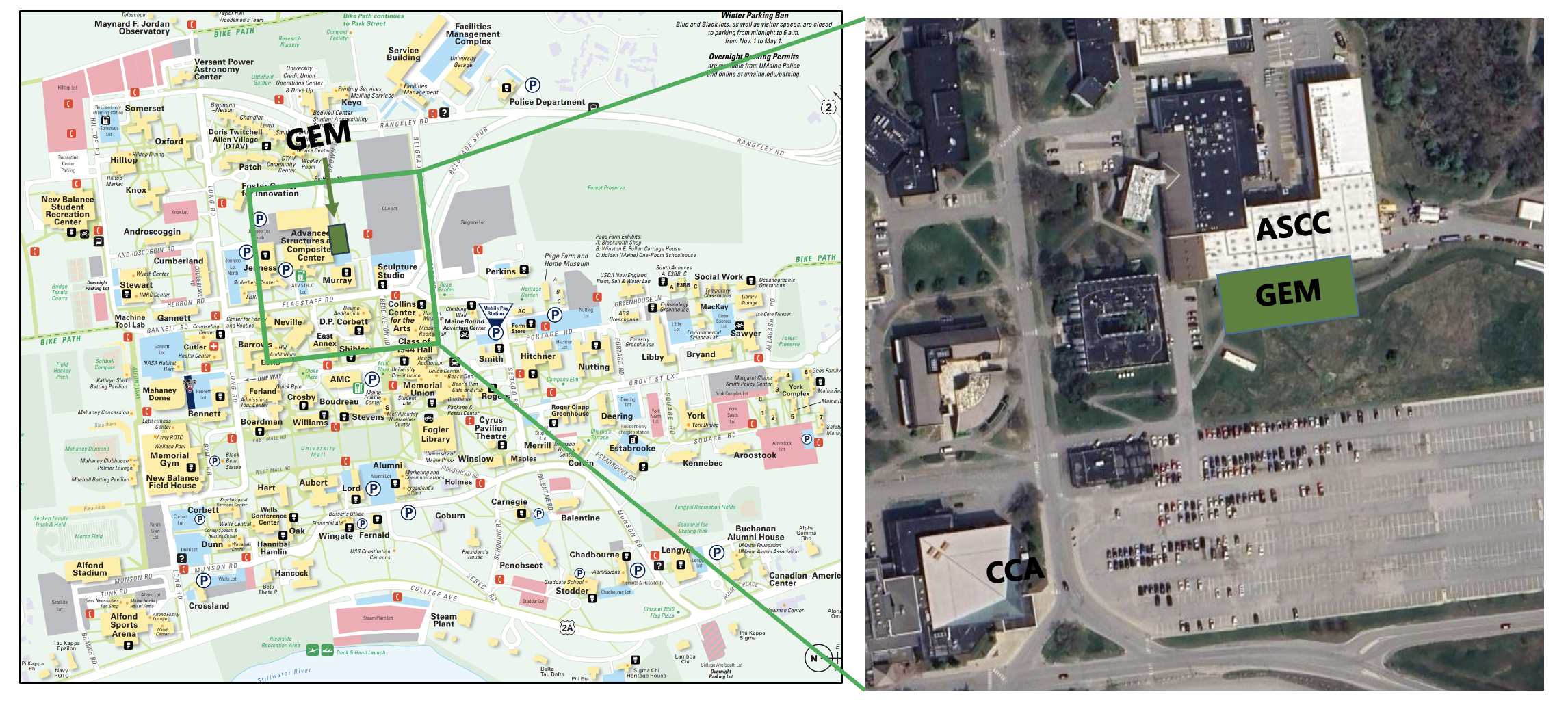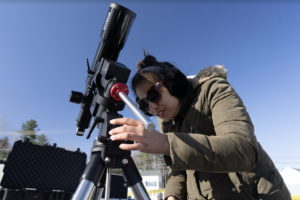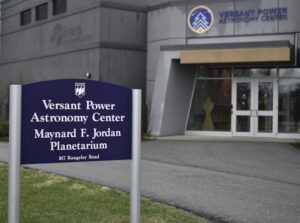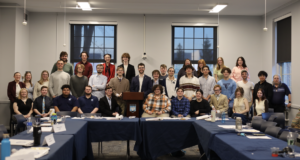The University of Maine College of Engineering and Computing (MCEC) was granted funding for the construction of a new facility on campus, which will begin in fall 2024. In January 2023, its Dean, Dr. Giovanna Guidoboni, led the establishment and development of the MCEC. The rationale for the college was previously developed by UMaine System leaders and several students, faculty, and staff members across the system with community input.
“The new building actually is designed with the goal of enabling the convergence of engineering, computing, humanities, social sciences and so on,” Guidoboni said. “There will be new spaces where this convergence can actually take place. And also new classes and new programs that will be developed thanks to that.”
The bold vision of UMS stems from a desire to collaborate across the system. Every campus has its strengths and serves different types of student populations. For instance, Guidoboni commends the material characterization labs, space applications and electrical circuits at the University of Southern Maine. UMaine Orono is known for its biomedical, computing and mechanical research. Students will achieve similar learning objectives working on their labs and then unite for larger projects.
“Engineering and computing are disciplines that together can achieve much more than just the sum of their parts,” said Guidoboni. “Actually, their application and impact really stem from applied technologies. You could see, for example, in construction or the 3D printing of a boat or a house. Then the two new energy systems like offshore wind or solar panels. And then the design of the materials in them.”
Aspects related to the social sciences or humanities will also play an important role in critical consideration of the findings. Questions such as “How do you interact in a new workplace where you have people and robots?” or “How are innovations perceived by users?” will be addressed as new technology is introduced to students and faculty. The reason for catalyzing convergence between engineering and computing is not only to intentionally combine disciplines but also to enable impact on a much broader spectrum.
Guidoboni emphasized that while a fundamental knowledge in math, chemistry and physics is true everywhere, exploring possibilities on how to join forces provides more opportunities for students. The objective is to bridge knowledge gaps in math and physics to provide students with an easier entryway into engineering or computing programs.
“For the incoming class this year, we will have a Research Learning Experience that is called ‘Charismathic’ to discover the charisma of math,” Guidoboni said. “We will have four sections here at UMaine and one section at USM. Students will be guided by different advisors but we will work together to actually show how they will be learning in their introductory classes. It will be impactful for the courses to come, for their research or the things that they could do in the workplace.”
Space on the first floor will be accessible from the Collins Center for the Arts parking lot and function as an open environment similar to that of Ferland. A hands-on, immersive lab will be established on the right side. According to Guidoboni, students can learn how to use a printer with robotic arms that are not confined to specific methods or materials. Furthermore, sensors will collect real-time data amidst printing for users to identify defects.
The primary purpose is to encourage interaction with the machine and redirect printing. It serves as an integration of mechanical engineering, electrical engineering, material science and computing applying fundamental sciences including chemistry, physics and geometry in controlling the robot.
The second floor will have active learning classrooms, which open opportunities for group projects. Some team members may be downstairs in the lab while others work in classrooms upstairs. Participants can stay connected remotely with a computer to share data or use a commanding pad to communicate with members. Students can gain knowledge and experience upstairs and apply it to innovations downstairs.
“In a sense, the innovative technologies that have been developed at ASCC in collaboration with many faculty across campus is driving the vision of the need for convergence of disciplines to lead to groundbreaking innovations,” said Guidoboni. “And the educational spaces in the new building like the labs and interactive classrooms will enable us to develop programs where students can experience and learn that from year one.”
The new printer will scale up efforts for 3D printing regarding the house and boat on campus in contribution to the UMaine BioHome project. From the lab and interactive spaces, there will be an open view for visual connection to the larger printers.
“What is really important to me is how we can have in the design process, in our programs and in our industry, a diverse group of people,” Guidoboni said. “The more perspectives you have, the more likely it is that we come up with solutions that are actually usable and effective and that are adoptable not only by a small segment of the population.”
Guidoboni emphasized women in particular must feel that it is also a space for them. There will be a multipurpose room on the second floor to host activities for middle and high schoolers, such as workshops for girls in particular to show that engineering, computing and discovery-driven learning is for everyone.
Developers are in a position to alter plans as new advancements in technology and design arise throughout the next two years. One of the questions to be addressed is “How can we build something that is not just for what we know now but for what could be in the future?” It is one of the drivers of the design of the building. Guidoboni believes that technological advancements will originate from the building itself.
“Should new technologies come along, we can twitch them, or we can upgrade them,” Guidoboni said. “The important thing, though, that will not change is that the space is open, it is inclusive, it is flexible, and you can access it both physically and visually.”
UMaine facilities, including Boardman, Crosby, the Advanced Manufacturing Center and Geness will undergo a re-envisioning to make the spaces conducive to the MCEC vision of openness, collaboration and inclusivity. Guidoboni encourages students to share their wishes to help fuel capital plans. All perspectives are welcome.
“I would like to emphasize how amazed I am by the enthusiasm and the passion and the energy of students…As I talk about the plans and the visions for the college and also for the building, what I find is eagerness for this to come and the many opportunities that we have in front of us,” said Guidoboni.














